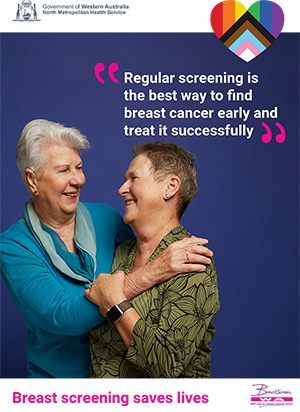.jpg) Paris has always had a reputation as a haven for gays and lesbians, but never more so than in the early years of the 20th century, when a rich and fascinating lesbian community thrived on the city’s Left Bank. While the women themselves may be long gone, there are constant reminders of their influence all over the city. OUTinPerth’s Francophile correspondent Amy Henderson takes us on a walking tour through the lesbian history of Paris.
Paris has always had a reputation as a haven for gays and lesbians, but never more so than in the early years of the 20th century, when a rich and fascinating lesbian community thrived on the city’s Left Bank. While the women themselves may be long gone, there are constant reminders of their influence all over the city. OUTinPerth’s Francophile correspondent Amy Henderson takes us on a walking tour through the lesbian history of Paris.
In the early 20th century, the 6th arrondissement (or Latin Quarter) on the left bank of the Seine River was the artistic and intellectual centre of Paris. Today, a pleasant afternoon walk around the arrondissement will take you past some of the most important addresses in Parisian lesbian history. To start, take the Metro to St Placide (Line 4 – direction Porte d’Orléans/Porte de Clignancourt) and walk east along Rue de Fleurus, which will bring you to our first stop.
1) 27 Rue de Fleurus is the address made famous by Gertrude Stein, the lesbian American expat writer who held her weekly salons there for almost 40 years. Nearly every inch of wall space at number 27 was filled with an incredible collection of paintings by Renoir, Cezanne and Gauguin (to name a few), while mates such as Pablo Picasso and Ernest Hemmingway were regular visitors. Today, there is a small plaque near the entrance of number 27, acknowledging Gertrude’s residence, though big gates block any view of the courtyard on the other side.
2) Continue east along Rue de Fleurus to the Luxembourg Gardens (Jardin du Luxembourg), where Gertrude and her lover Alice would walk their dogs and Natalie Barney, another lesbian expat writer, would stroll with her numerous lovers. The gardens have changed little over the years and it is not hard to imagine ladies with bustles, bonnets and parasols walking past.
3) Exit the gardens from the same gate, at the Rue de Fleurus and head north (right) up Rue Bonaparte (past the famous St Sulpice Church) and cross over Boulevard St Germain to Place St Germain de Prés. This is where you will find Les Deux Magots, a favourite haunt of Hemmingway, Picasso, Flanner and many other Left Bank residents that later became the meeting point for philosophers and intellectuals such as Jean Paul Sartre.
4) A few hundred metres west on Boulevard St Germain is The Deux Magots’ main rival, the equally famous Café de Flore. The waiters at both cafes still wear traditional waistcoats, bowties and long white aprons, but be forewarned, the bohemian atmosphere is not what it was in the time of Stein and the menus are screamingly expensive.
5) Continue north from Place St Germain de Prés along Rue Bonaparte. At 36 Rue Bonaparte is the Hotel St-Germain-de-Pres, where journalist Janet Flanner lived during the 1920’s and 30’s and wrote her weekly ‘Letters from Paris’ for The New Yorker. Janet had a long-standing, but never monogamous, relationship with fellow journalist Solita Solano.
6) About 100m further north, turn west (right) down Rue Jacob. Natalie Barney lived at 20 Rue Jacob for more than 50 years, held lavish salons and costume parties and romanced nearly every lesbian in Paris. She died at this address at the grand old age of 95. While the house itself is set back from the street and large gates prevent any view, it is still worth paying a visit.
7) Two streets further north from Rue Jacob (again along Rue Bonaparte) is Rue des Beaux Arts. While today it may be simply called L’Hotel, 13 Rue des Beaux Arts was once called Hotel d’Alsace and it was in room 16 of this hotel that Oscar Wilde died in 1900. While not exactly a figure in lesbian history, Wilde was influential in the lives and art of those who succeeded him, and his niece, Dolly Wilde was a long-term lover of Natalie Barney’s. A plaque near the entrance acknowledges Oscar’s residence and death in the hotel.
8) After your journey through the lesbian history of Paris past, follow Rue Bonaparte north to the Seine river, where a few hundred metres east you can cross the river to the 4th Arrondissement, or Marais. Today, Marais is the predominantly queer area of the city, chock-full of gay and lesbian bars, nightclubs and bookshops.





